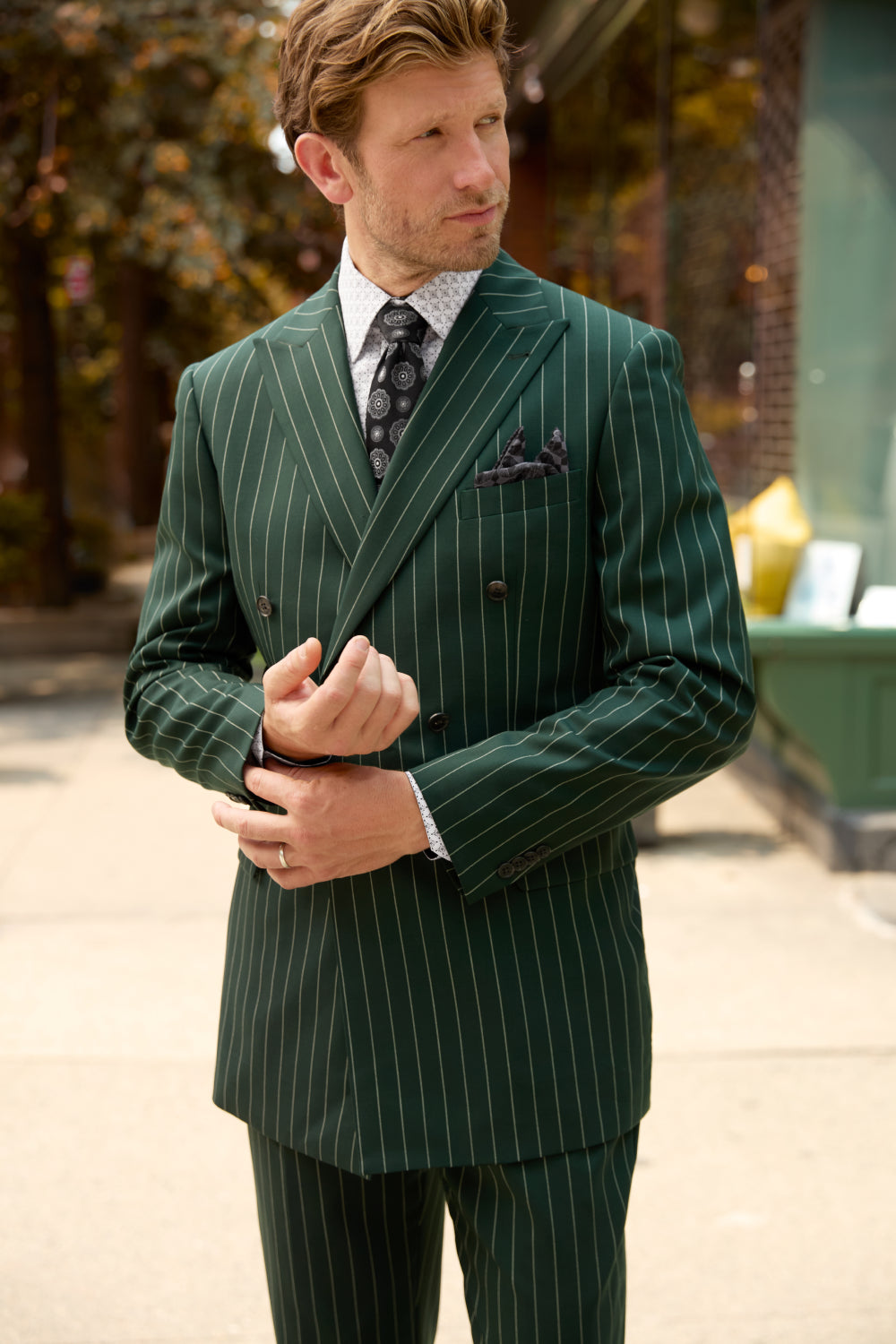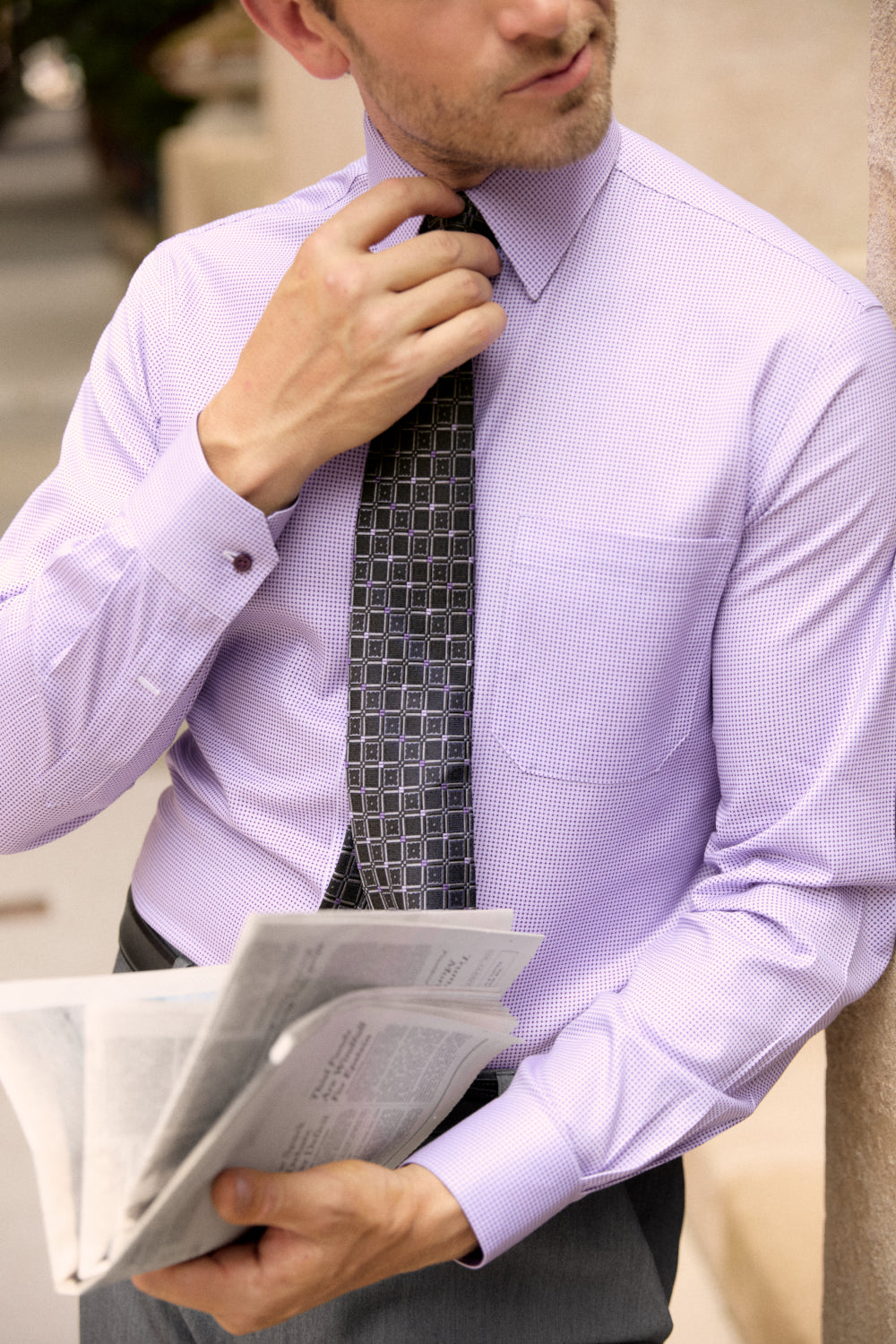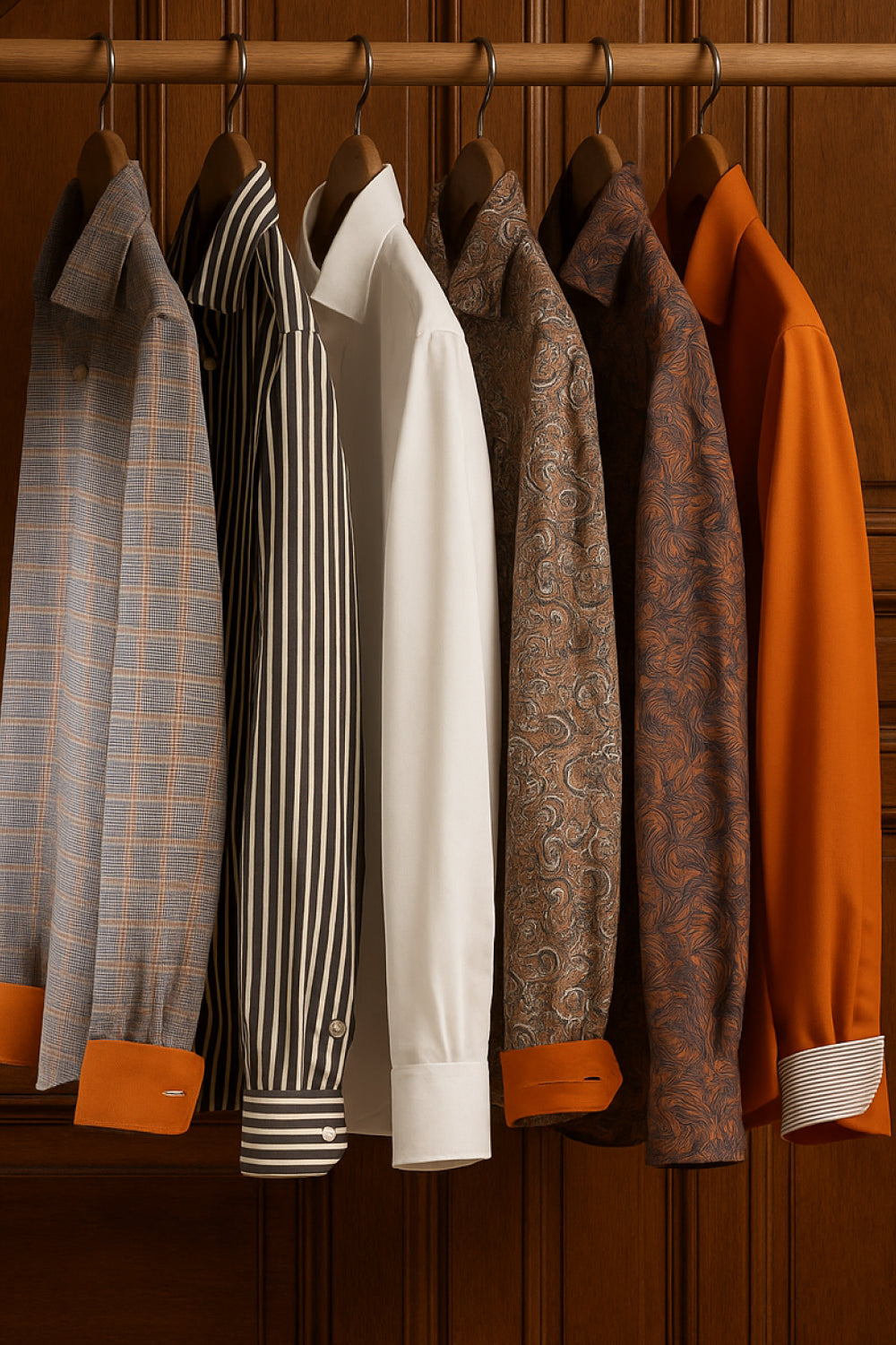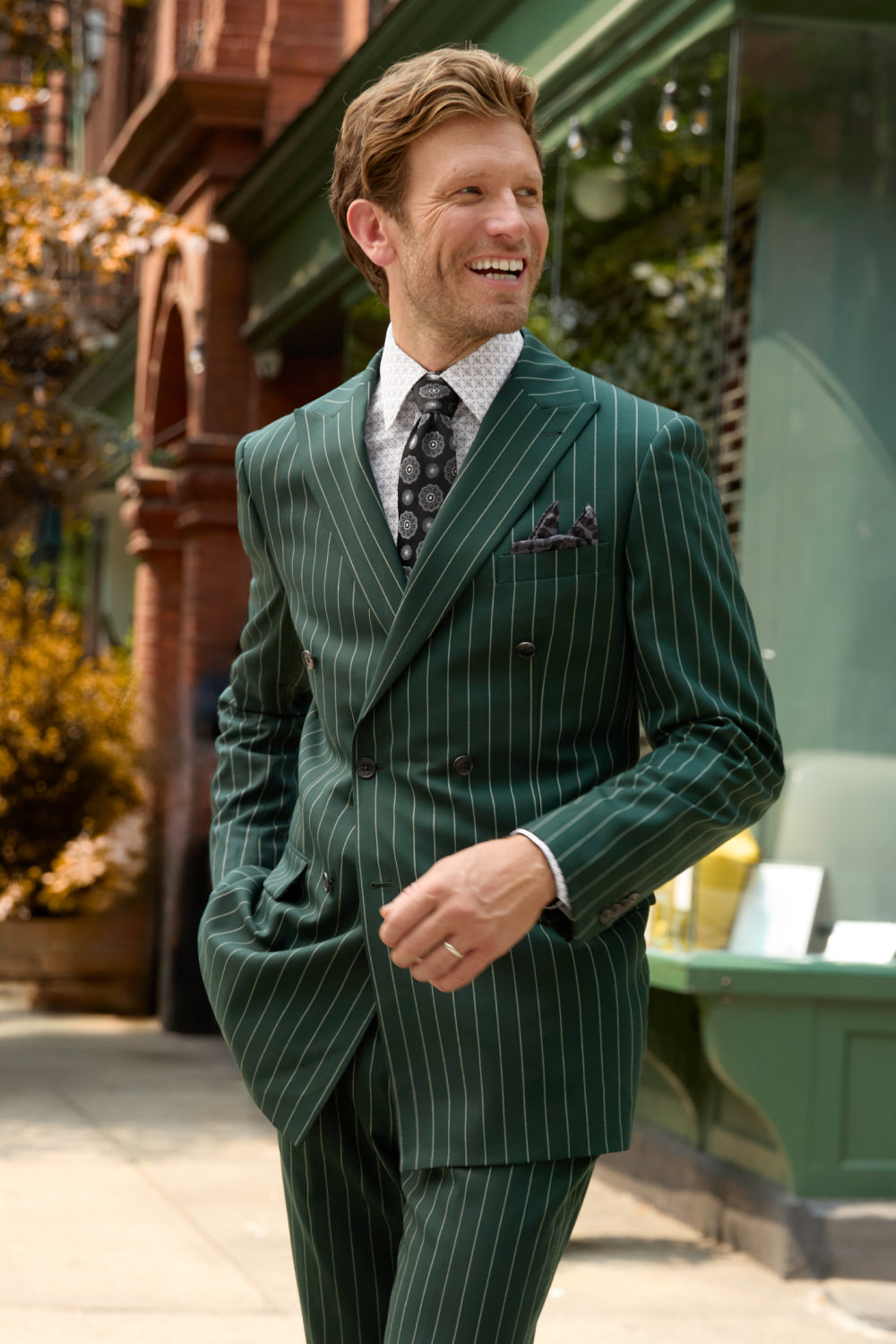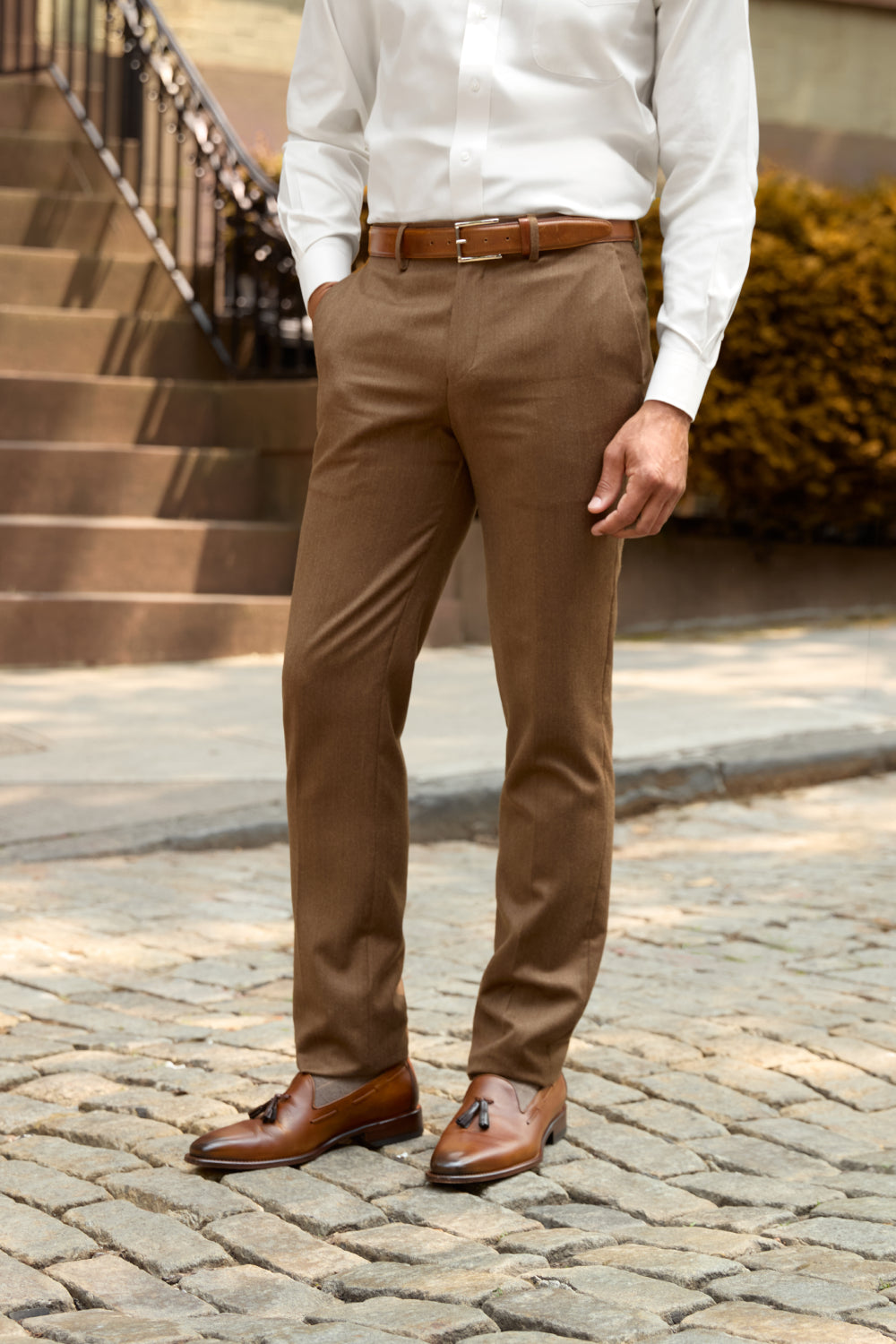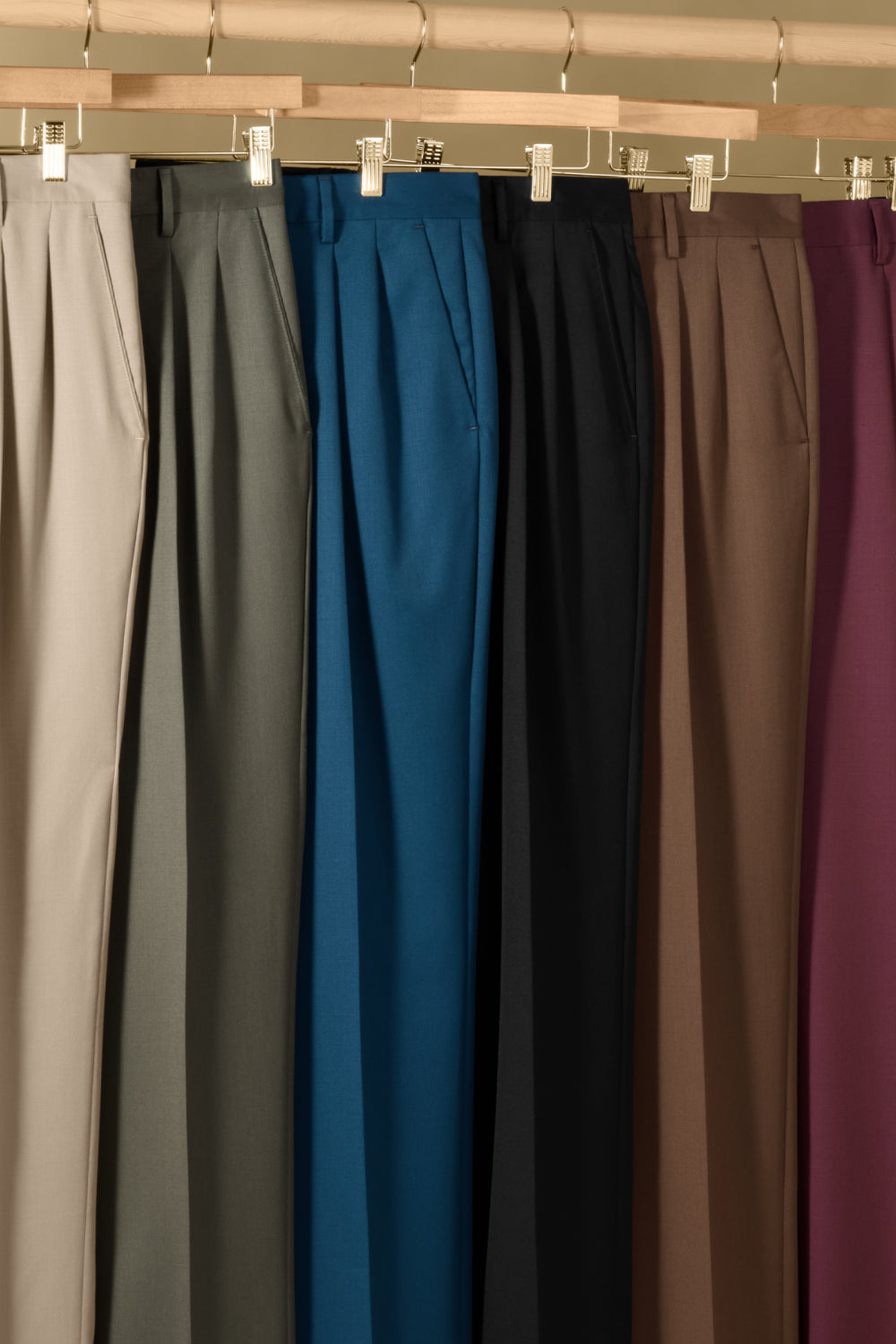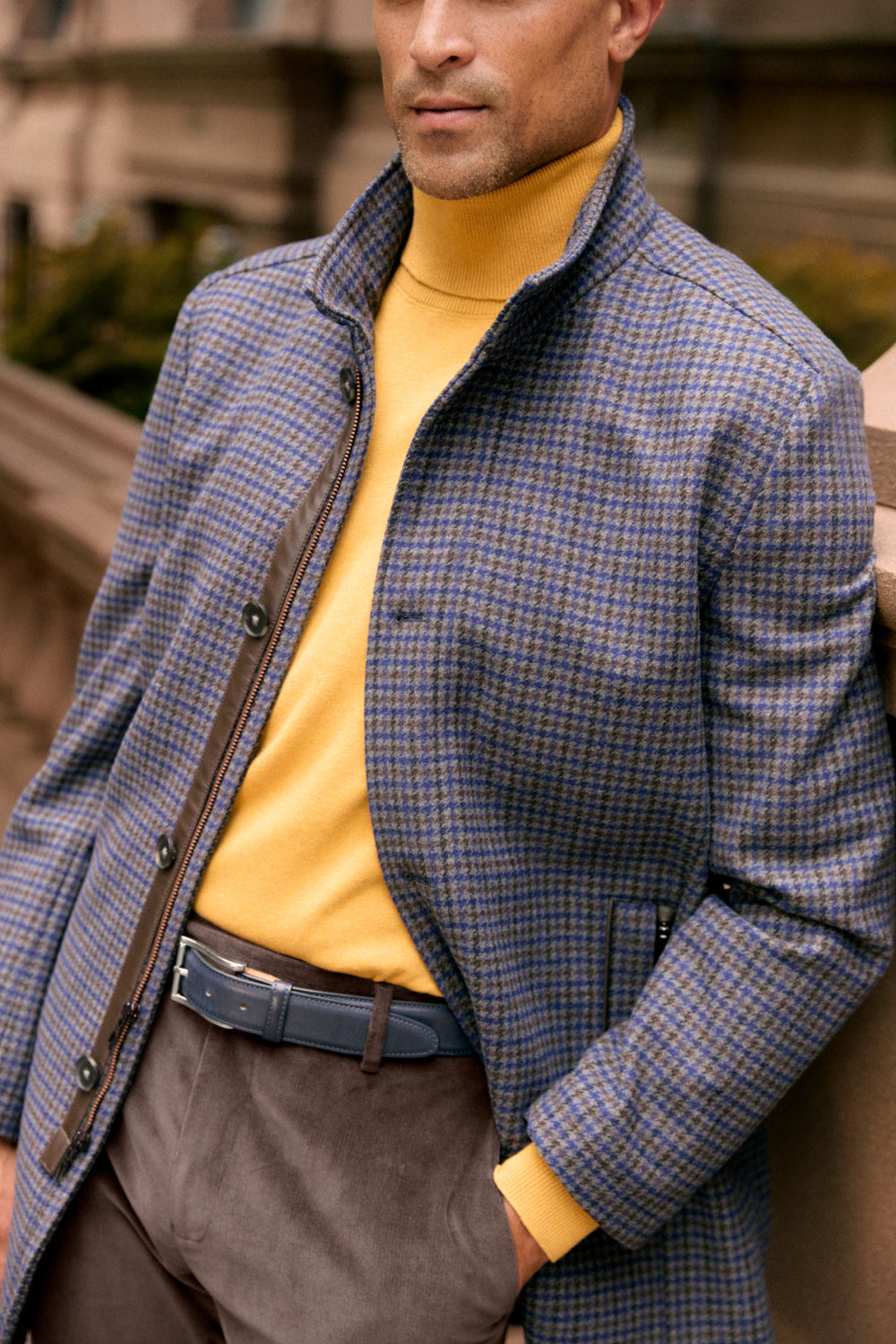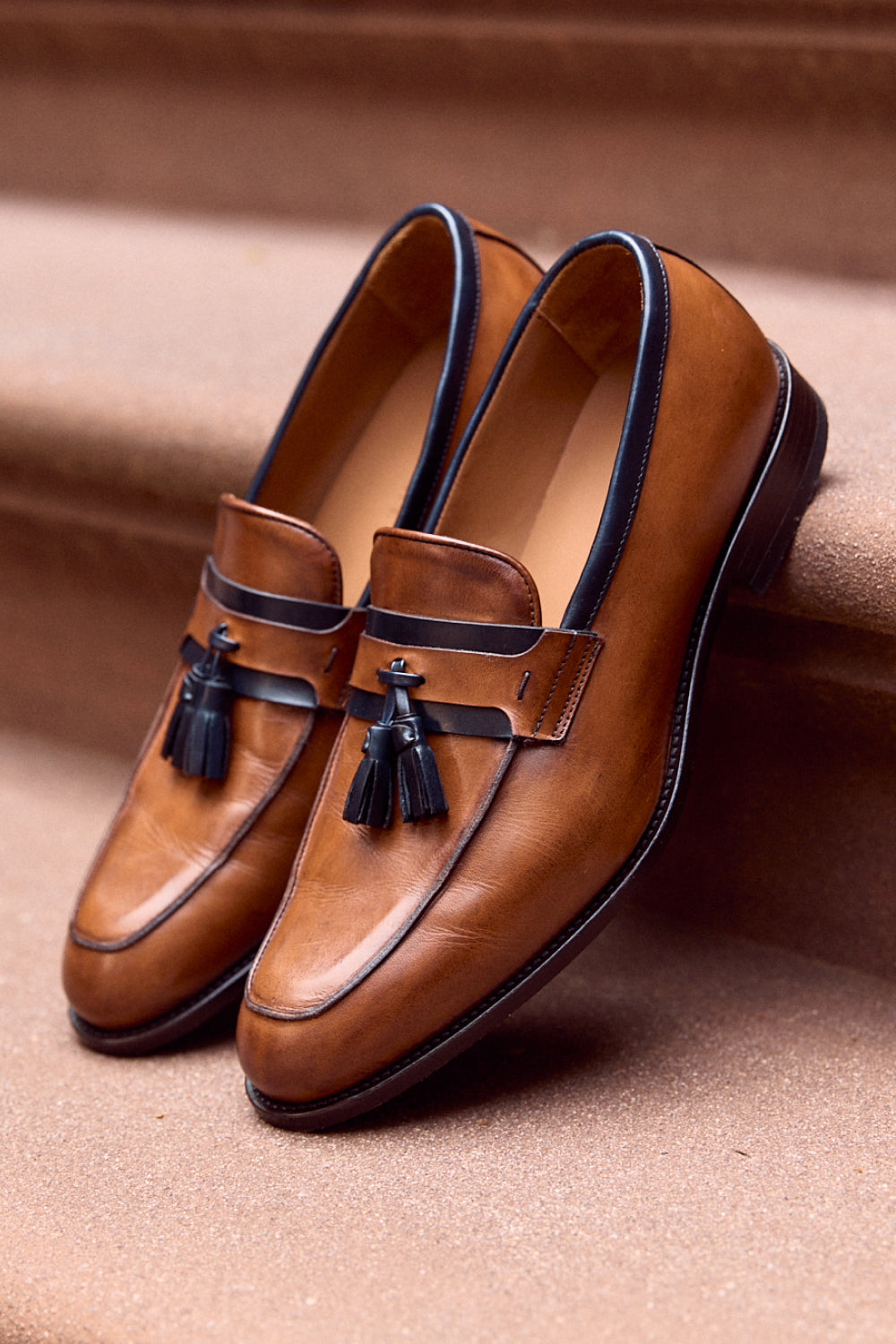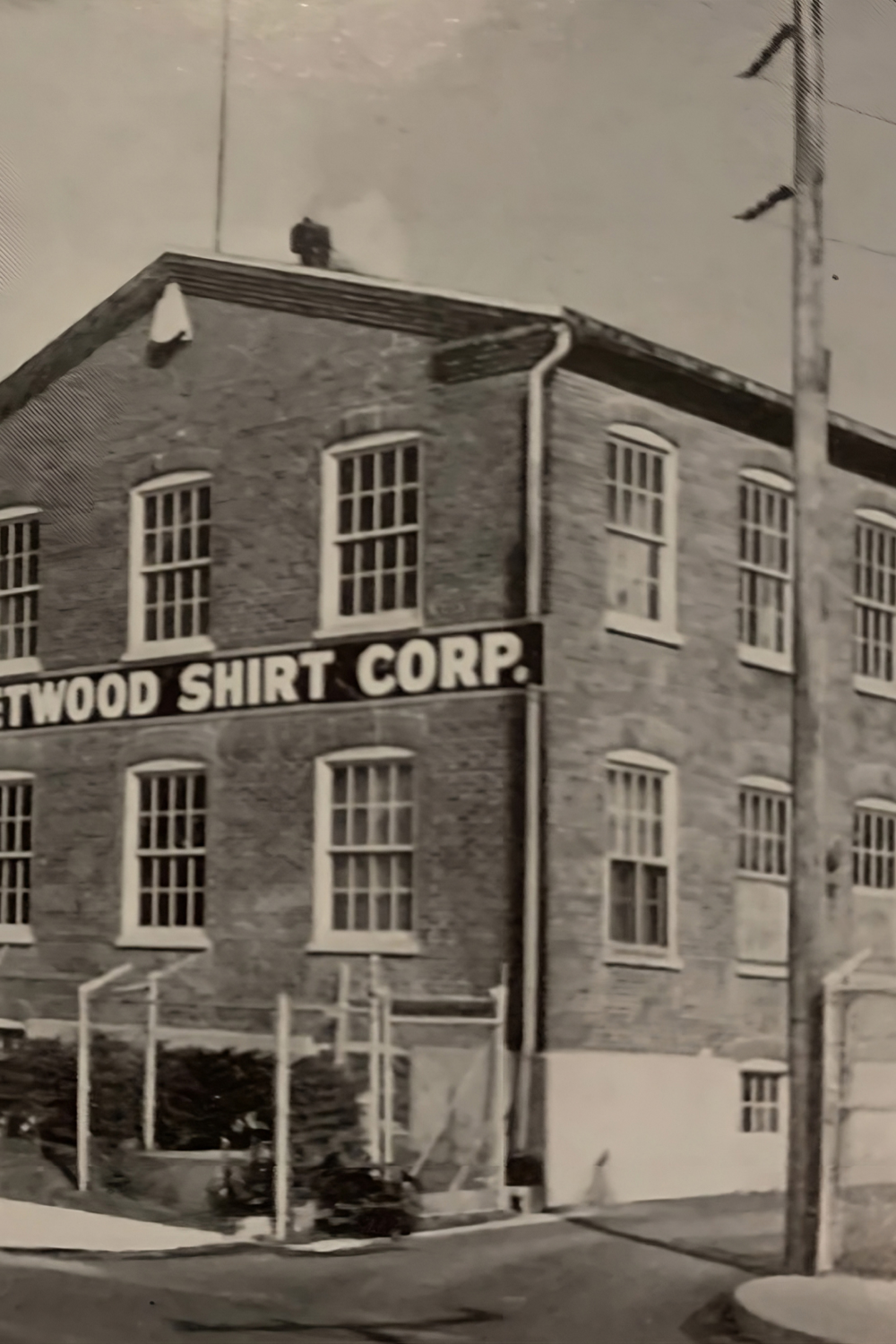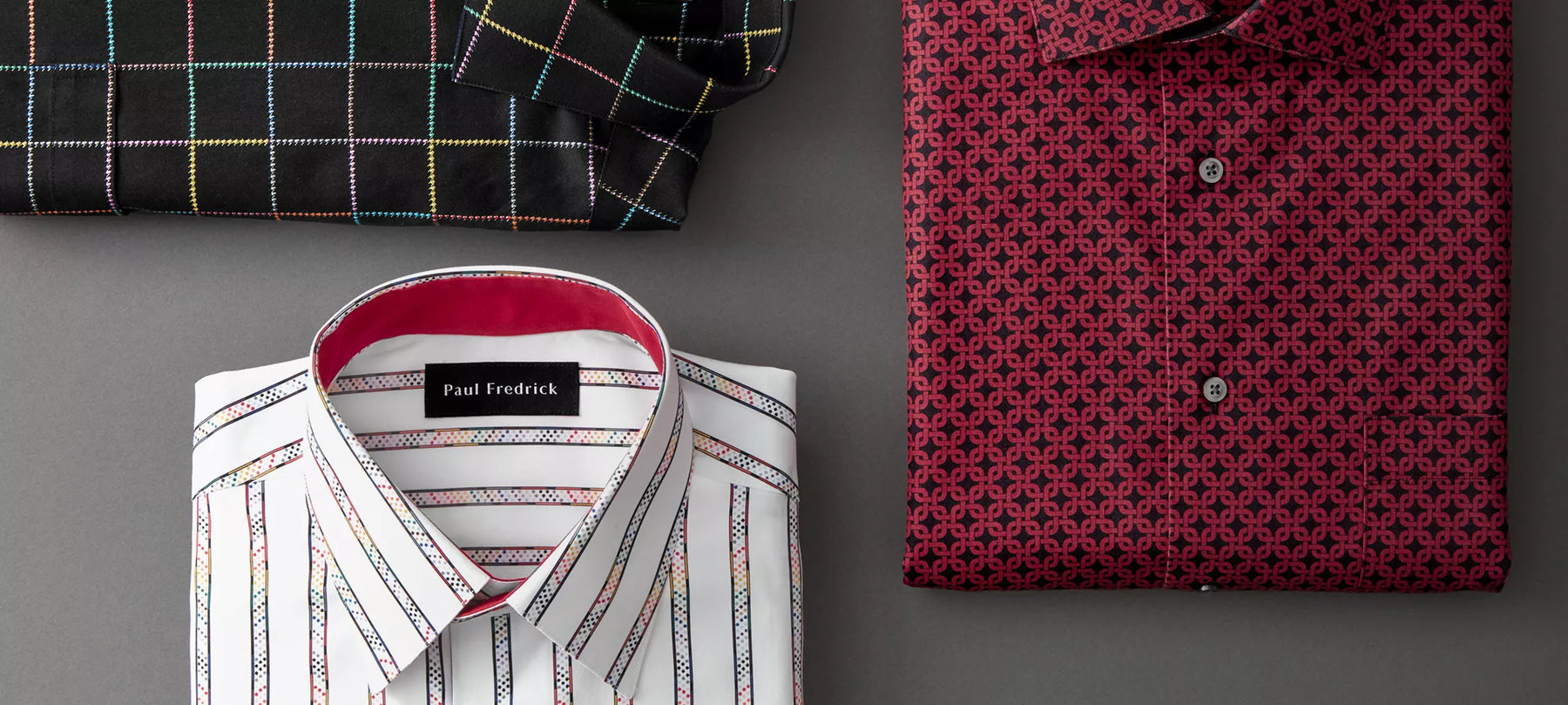Three jackets at first glance similar in fabrication, styling and use. But what makes a suit jacket a suit jacket? A blazer a blazer? We inherently know they are not, in fact, interchangeable, but when is a sport coat appropriate vs. the other options? How do you create an appropriate outfit around each? Does a man need all three in his closet?
We get it. When it comes to formalities, things aren’t always clear. In this article we will demystify the differences (and there are some big differences, even if subtle) between a sport coat, blazer and suit jacket and help you choose the best for any situation.
Sport Coat vs Blazer vs Suit Jacket: What to Wear Based on Occasion
Life’s moments are many, and the right look for any occasion is an important consideration for a well-dressed guy. From the most formal affairs to the office or weekend brunch, there is a time and place for each—a blazer, sport coat or suit jacket.
Much of this comes down to tradition, and traditions are always changing. But let’s first set some ground rules for when and where a sport coat, blazer or suit jacket is almost always appropriate.
Sport Coats: Least Formal
In a world of tech fabrics and streamlined on-field uniforms, it might be hard to believe that at one time the “sport” in sport coat was quite literal. They were first worn by participants in certain outdoor sports and quickly adopted by fans cheering in the stands—much like you might proudly don the jersey of a favorite football or baseball player today. They then moved into the realm of everyday wear, becoming particularly fashionable as a business casual favorite and beyond.
But enough of the history lesson. Given its past, it probably makes a little more sense why the sport coat today is considered the least formal option when compared to a blazer or suit jacket. The sport coat slots into what we might today call a smart casual look. It’s perfect for occasions where you want a polished and put-together outfit without all the uptight rules. Think nice dinners with friends, summer lawn parties, after-hours work events.
Part of the sport coat’s more casual leanings come from its versatility. No need for matching pants—anything from chinos to jeans would be appropriate. Contrasting colors are expected. Same goes for the shirt, knit or sweater you pair your sport coat with. The sport coat itself perhaps allows for the most expression and personality of the three main jacket types. They are available in a variety of colors and patterns as well as constructed from a range of materials like wool, tweed or corduroy.
A classic sport coat look pairs the jacket with the relaxed style of an oxford shirt, dark denim pants and leather loafers. A perfect date night outfit.
Blazer: Somewhat Formal
The blazer had a decidedly different origin than the sport coat. While there are competing stories, almost all can agree there is a nautical connection (carried through today by the metal buttons typical of the blazer, often featuring an anchor motif or similar). Whether the look was first worn as a naval ensemble or the distinguishing dress of boat club members is debatable, but the recurrent theme is the blazer as part of a uniform. Today this continues with the blazer’s strong association with prep school attire (and still alongside the peacoat as prototypical naval garb across various armed services worldwide).
Perhaps due to early country club connections as dress for the well-to-do, the blazer has since established itself as a great option for job interviews, important meetings, upscale events and weddings (when more formal attire or black tie is not requested). Most typically seen in classic solid colors like navy, black or grey, its structured shape offers refined simplicity perfect for occasion dressing but adaptable enough to take the place of a sport coat as part of a more casual look.
In more formal settings, the blazer is best paired with dress pants or khaki slacks. Go for a grey or light tan pant and complete the outfit with a white dress shirt and brown dress shoes for a timeless, occasion-appropriate look.
Suit Jackets: Most Formal
The suit jacket’s long lineage isn’t the easiest to trace, but it has evolved over centuries from the formalwear of the past to what we know today. Unlike blazers and sport coats, its more defined and formal position has not strayed far, though forays into the realm of casual attire continue to shape the suit.
Classically, a suit, similar to a blazer, is most often association with solid, ubiquitous colors like black, blue and grey. It is often suggested a man should own one each of these core suits (though those that wear a suit rarely may only ever purchase and own just one suit their entire life). Regardless of whether you go with a traditional color or a more adventurous hue or pattern, the two-piece suit requires matching pants. A three-piece suit adds in a matching vest.
When you are expected to dress your best, a suit is your go-to choice. Whether that’s a more formal wedding, key business events or a funeral. But if the invite calls for black or white tie, a suit won’t do. That’s the realm of the tux, but we won’t make this more confusing by throwing in another jacket to consider.
What Is a Sport Coat?
Call it a sport coat, a sports coat or sports jacket, a wide variety of styles, fabrics and details is a defining factor of this versatile menswear essential. The sport coat has a more relaxed, looser structure than a blazer or suit jacket (but don’t mistake this for a baggy or unflattering fit), lending to its reputation as a sporting jacket for more relaxed dress codes.
Most common in casual or semi-formal settings, a single-breasted jacket with notch lapels (the folded flaps near the collar), being a less ornate alternative to the peak lapel found on many suit jackets, is the prototypical example. The double-breasted sport coat—distinguished with its fold-over front and two rows of buttons—is seen more rarely. And you know we like the rare and unique at Paul Fredrick. We offer double-breasted sport coats to bring a distinctive touch that takes the jacket in a slightly more formal direction.
To fit its less stiff approach, a sport coat might feature patch pockets, though flap pockets are equally as common. While not standard, the elbow patch is a favorite collegiate touch—you know, like the one your cool, nonchalant professor wore. Further decorative elements include the sport coat’s lining—either partial or full. Some summer-weight sport coats will forego lining entirely.
More than the blazer or suit jacket, the sport coat enjoys a wide range of fabrics in myriad combinations of colors and patterns. Let’s break down a few of the more popular options.
Common Sport Coat Fabrics
- Wool: Ubiquitous option for year-round wear. While wool might at first bring connotations of weight and warmth, it is actually quite breathable. A variety of weaves are available in light weights for warm months or heavier for colder weather. A medium weight wool jacket makes a great option for any season.
- Cotton: Another favorite textile for sport coat construction, high-quality cotton not only brings a reputation for comfort, but also creates a durable jacket that’s great no matter the time of year. Cotton’s color retention allows for rich and vivid hues to make an outfit pop.
- Linen: Lightweight and relaxed, linen is a popular option for warm weather wear. Linen’s nonchalant looks are a favorite for more casual outdoor outings like a summer party, but this natural-feel fabric can be dressed up for an elevated-yet-breezy ensemble.
- Corduroy: Those elbow patches we mentioned earlier? They go great with corduroy. This is a reliable fabric typically of a heavier weight and made of cotton. Its distinctive “cords” (AKA wale) can vary in size from the subtle to the unabashedly textural.
- Tweed: Heavyweight woolen weave with a rough and textured surface. Great for colder months, like corduroy, tweed has a distinctive look and durable body that holds up to harsher weather while maintaining its easy good looks.
- Italian Wool: Everything that makes wool a great choice made to the high standard of diligent Italian weavers.
- Donegal Wool: Named Specifically for the region in Ireland where it is produced, Donegal wool has an appearance similar to tweed, but features distinctive flecks of color and a softer feel.
This range of fabrications and their unique qualities combine with colors and patterns from the traditional to the statement making. Working a sport coat into your style is a pretty straightforward affair, but let’s review some basic styling tips.
Sport Coat Styling Tips
- Pants Make the Pairing: Your choice of pants is a defining factor of any outfit featuring a sport coat. The rules for what to wear are quite fluid. Dress pants give a more formal appearance. Go for a contrasting color—attempting to match a pair of dress pants to your sport coat, even if only a few shades off, can end up looking more like a mismatched suit. Chinos provide a middle ground between the formal and casual, keeping your outfit versatile. For quintessential smart casual, pair with a clean pair of dark wash denim pants or jeans.
- Show off Your Shirt: Similar to pants, the shirt you settle on will bring its own vibe to your look. A white dress shirt with point collar (and maybe a tie) makes an appropriate look for semi-formal events. Go with an oxford in a classic color for business casual. A casual shirt or polo can add some comfort and fun.
- Layer in a Sweater: Another great option below a sport coat is a sweater—whether layered over a collared shirt or worn on its own. Depending on neckline, a sweater and sport coat combo can go casual or business but is best avoided for formal occasions.
- Accessories & Shoes: A pocket square can add panache with color and personality. A lapel pin in tandem or alone achieves a similar result. Shoes should also be occasion appropriate. Loafers or dress shoes are more formal while boots or sneakers are more casual.
With its adaptable nature, finding balance is key when wearing a sport coat. Your choice of pants & shirt will make the biggest difference. Mixing and matching formal and casual elements can be to your benefit when going for a refined look with relaxed feel.
What Is a Blazer?
A blazer is the more formal cousin of the sport coat, at a glance appearing very similar but defined by a few key differences. It has a more structured construction that echoes its regimented past as the recognizable uniform of navy sailors, boat and country club members and prep school students. More often than not the blazer will showcase metal buttons, flap pockets and notch lapels.
A blazer is appropriate in most formal settings where a suit or black tie is not requested. A crisp dress shirt and pair of slacks keeps things together. A tie is a common complement to the blazer, but not necessary.
The blazer provides an easy option for when you want to look your best but would rather avoid breaking out the full suit. It is appropriately formal that you won’t feel underdressed in a job interview or at a wedding. If making a first impression that lasts is the goal, wear a cultivated outfit featuring a blazer to your next important business meeting.
The blazer does not usually offer as many options for personal expression as the sport coat. Traditional solid colors of black, grey, navy blue and tan are the go-to. Patterns are rare. Fabrications are more limited by comparison.
Common Blazer Fabrics
- Wool: Like the sport coat, wool is a primary textile for blazers. Its smooth appearance and feel plus an ability to showcase deep blacks and blues makes wool the most common option when purchasing a blazer.
- Cotton: Sharing some of wool’s key properties for appearance, feel and color, cotton is another popular option. Cotton is key when the focus is on comfort. It makes for a slightly less stiff construction than wool.
- Stretch Wool: Textile blends are also common, combining wool with cotton or other natural or man-made fibers. One of our favorites is stretch wool for added comfort with forgiving movement. Experience it for yourself with our wrinkle- and stain-resistant Travel Blazer.
You will find less-common options using some of the same fabrications as the sport coat, like tweed. When you move into the realm of more textured fabrics, expressive colors and eye-catching patterns, the line between blazer and sport coat begins to blur. What can be sure, though, is the way in which a blazer is most commonly styled.
Blazer Styling Tips
- Go for Dress(ier) Pants: A pair of dress pants like the classic wool gab meets the blazer on its level as a formal option. For a slightly toned-down look, chinos or khakis can be a great option. Like the sport coat, try not to pick a color that sits too closely to the color of your blazer to limit a distracting, unmatched look.
- The Shirt Is No Formality: A white dress shirt (or similar traditional color like blue) keeps the formal thread throughout the outfit. Go a little more country club with a polo or Ivy League with an oxford. Since the blazer takes a fairly straightforward approach, feel free to play with color and pattern when it comes to your choice of shirt.
- Get Prepped with a Sweater: For a preppy look, a v-neck or crewneck sweater over an oxford or other collared shirt is instantly recognizable. A mock neck sweater or turtleneck creates a distinctive look on colder days.
- Tie it Together with Accessories: For the most formal approach, button up and tighten the tie. Complete the look with a colorful pocket square. Consider your other accessories. A nice watch is always classic. Or try something new with a refined bracelet.
The blazer tends to keep things simple with its defined appearance and formal demeanor, but that does not mean it leaves no room to show your style. Though the expectation might be straightlaced, take some styling cues from the sport coat to create a smart look all your own. How you outfit a blazer will make all the difference.
What Makes a Suit Jacket?
The biggest differentiator between a suit jacket and a sport coat or blazer is right in the name. This jacket makes up part of a suit, the other main element being matching suit pants. The key here is matching, not only in color but also in fabrication. A third element to the suit is the matching suit vest, though this has become mostly an optional addition.
The suit is expected for most formal events like weddings and funerals but is also a staple of a polished business professional look. While many guys see the suit as occasion-only, for some job roles, industries and workplaces (also varying by culture) the suit is an everyday affair. Granted, this was much more common in past decades than it is today.
Despite its refined and reserved appearance, a well-made and well-fitted suit can be a great fallback for situations where casual is inappropriate, but dress code is otherwise ambiguous. A job interview is a good example as workplace norms shift and change. You can rarely be underdressed in a good-looking suit.
Suits, being one of the most formal ensembles a man will own, are made with a focus on high-quality materials and tailoring. A suit jacket, like a blazer, has a defined structure and striking silhouette (when properly fitted). Many suit jackets will include padded shoulders to further sculpt the final look. Options for notch and peak lapels, single- and double-breasted and other details further define a suit jacket’s style.
The final appearance and feel of a suit are greatly influenced by fabrication. We’ll discuss a few options.
Common Suit Jacket Fabrics
- Wool: Noticing a theme? The big-ticket items in a man’s wardrobe sure seem to trend towards wool. If it isn’t yet apparent why, it comes down to its comfortable feel and all-season versatility paired with clean and crisp looks. The suit makes no exception here.
- Cotton: Another recurring favorite for its comfort and adaptability is cotton. A suit jacket in cotton can take the look and feel in a casual direction, making this type of suit a great option to dress down for less formal situations.
- Linen: Speaking of a less formal look, linen brings a touch of carefree attitude. Think of pairing this lightweight suit jacket and pants with a band collar shirt and pair of leather slides or sandals for a destination wedding on a faraway white sand beach.
- Seersucker: A summer favorite right next to linen, it is not as lightweight but remains breathable thanks to its puckered texture that doesn’t lay flat against the skin, allowing for much-needed air circulation. The white seersucker suit is iconic, but at Paul Fredrick you will find less traditional looks—double-breasted, dark colors and more.
- Italian Wool: Fine Italian wool gives the already sleek and stylish suit jacket a boost of luxury while maintaining all the great qualities you expect from wool.
- Stretch Wool: A wool blend with added stretch keeps things comfortable on long days when you can’t let your style slip.
At Paul Fredrick, we favor materials that allow us to show off our penchant for color and pattern. Adding a touch of interest to the suit jacket can expand its wearability. Moving away from traditional blacks and blues can take a suit from stark to striking, invite more casual styling and make it possible for the suit jacket to be an appropriate option in almost (emphasis on almost) any situation. So what do we need to know to nail the look?
Suit Jacket Styling Tips
- It Takes Two: As mentioned, when purchasing your suit jacket, you’ll want to get the matching pair of pants at the same time. Even with a black or blue suit, a pair of pants different from those made to match the jacket could miss the mark with shades that stray too far. Like most retailers, Paul Fredrick offers suit jackets and suit pants as a package deal or, optionally, separate items, but there is always a perfect match.
- The Shirt Sets the Tone: A dress shirt like one of our signature non-iron shirts is expected wear with a suit jacket. Most commonly a point collar in upscale cotton is worn, with or without a tie. If you do wear a tie, you could also go with a spread or tab collar. A button-down collar can be work with or without a tie but leans a little to the casual side. For a formal look avoid heavier cotton shirts like the oxford in favor of something with a finer finish. Mixing in a casual shirt for less formal occasions or day-to-day wear is an interesting way to switch things up and add personality.
- Finish Strong: Accessories can add a new dimension to a suit jacket, especially if you are wearing a more muted color. As mentioned when discussing shirts, they say “suit and tie” for a reason, and that reason is that for so long many men considered the combination a requirement. A great tie is one way to add some character, but try ditching the tie and shifting the color and pattern to your pocket square. You can also bring some personality with your socks--pairing a contrasting color or going for a statement pattern—or lack thereof. Round it all out with a nice belt.
- Step Up the Shoes: Speaking of belts, let’s reconsider the rule that the shoe must match the belt, and both should follow a simple rule when coordinating with a suit jacket: brown leather with a blue suit, black leather with a black suit. These still hold true for simplicity’s sake, but what’s the fun in taking the simple route? Experiment with new combinations and styles of shoes in non-traditional colors.
- Fit Matters: Most importantly in styling a suit is finding your measurements and dialing in your fit. We offer a range of sizes and fits to accommodate almost any guy. Our Perfect Fit Guarantee means we’ll work with you to get it right. In the end, it might not be possible to completely cut out the tailor. The suit that looks best on you will be fitted to your exact specs and style.
Remember these guidelines are general and apply mostly to suit jackets in a formal setting. With such a wide range of interesting styles, colors and patterns, the beauty of a classic suit is that its timeless look can be molded to fit the moment and your personality.
Make it Yours
Hopefully this guide has served as a helpful jumping off point for not only understanding the difference between a sport coat, blazer and suit jacket, but also what to look for when buying and styling. When in doubt, you can safely fall back on what we have established here. But don’t take it as the final word. Our ideas of fashion and formality and where the two meet are everchanging. Find your own look, make your own rules. The way you dress today sets the standard for tomorrow.
FAQs
Can a Suit Jacket be Worn as a Sport Coat?
Generally, you could take the suit jacket alone and pair with a contrasting pair of pants and style similar to a sport coat or blazer. A rip in the matching suit pants or the occasional drycleaning mishap will happen. Whether you want to wear the suit jacket as a separate piece out of necessity or simply as an experiment in style, the importance is to make it look intentional, not like a mismatched suit. So, yes, it’s definitely possible, but it’s up to you to pull it off.
Can You Wear a Sport Coat as a Blazer?
This one is a bit trickier, given that a sport coat and blazer have distinct differences in construction and appearance. It’s not hard to dress up a sport coat for more formal occasions, but can it truly take the place of a blazer or reach its level of formality? Our suggestion would be to go for a sport coat that has the overall silhouette and understated approach of a blazer. Match it up to dress pants and a dress shirt and you’ll get pretty close.
Can a Blazer Be Worn as a Suit?
We wouldn’t recommend it. Not only does the blazer feature some features like distinctive metal buttons that are undecidedly not a feature of a suit jacket, but they are not made with a pair of pants to match. And, as we have mentioned, pants that are even slightly mismatched to the jacket will look a bit awkward. A blazer is a hard substitute for a suit itself, but it might be that a normal blazer look is perfectly appropriate for the same event where you might wear a suit.
Can a Sport Coat or Blazer Be Worn to a Wedding?
Absolutely, but check the dress code. If guests are requested in formalwear specifically, a suit jacket and pants are a safer bet. If the invite mentions black tie or white tie, don’t even consider a blazer or suit coat (or even a suit jacket, in this case). When a dress code is not mentioned or a more casual vibe is requested, you won’t stick out from the crowd in a blazer or sport coat. For a casual wedding look that stands out in all the right ways, a modern, dressed-down suit is worth considering.
